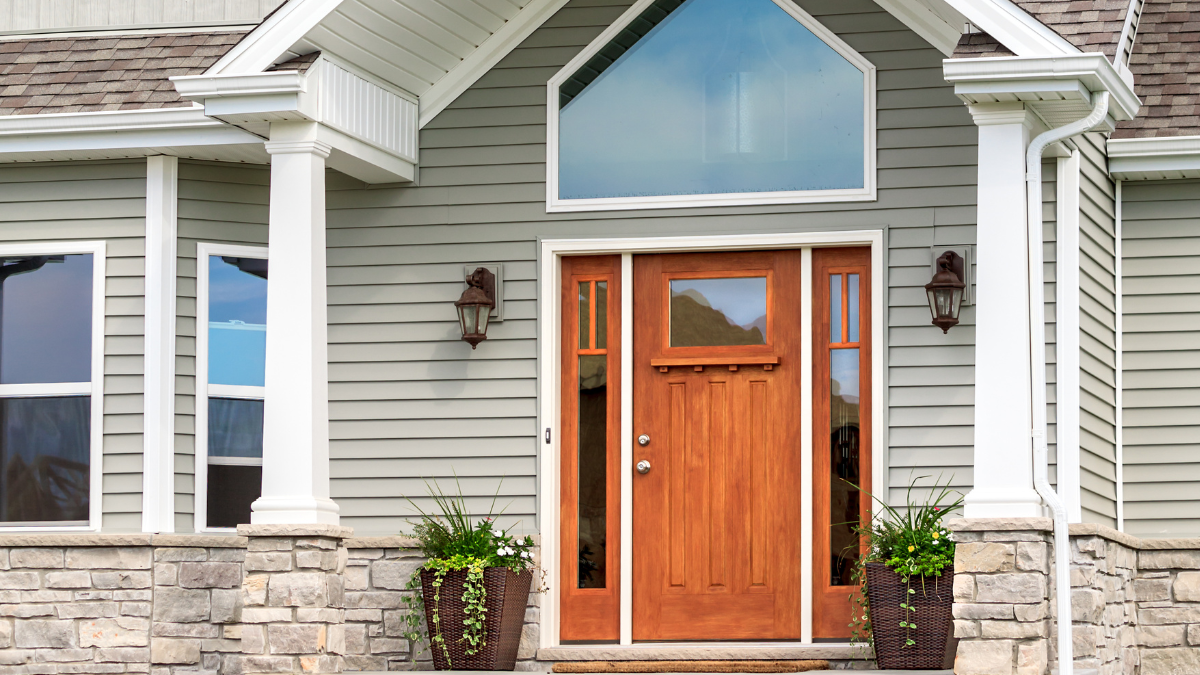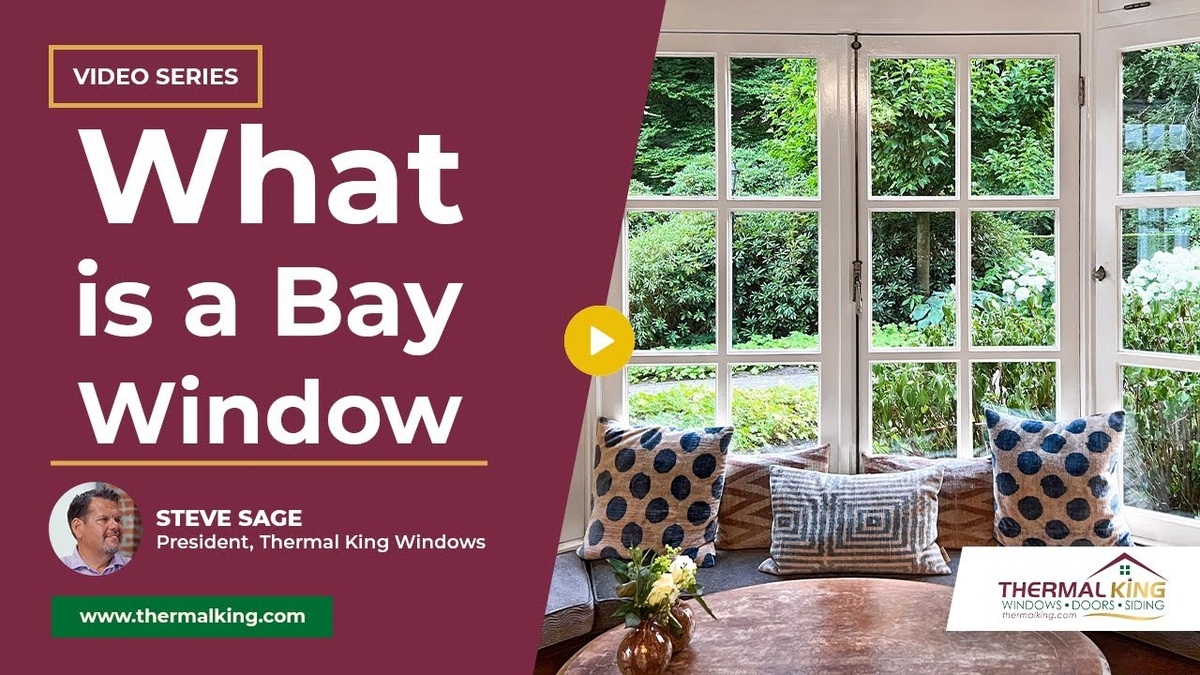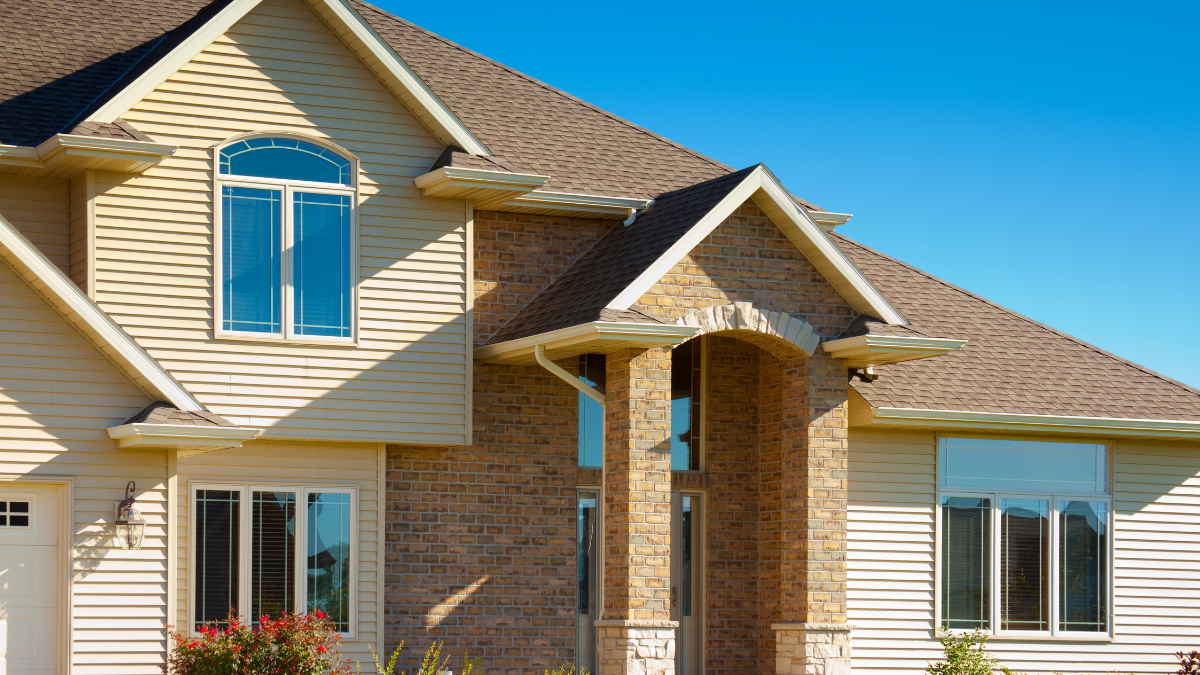Fiber cement siding has emerged as a popular building material for residential and commercial structures, combining aesthetic value with functionality. Understanding the ins and outs of fiber cement siding can empower homeowners and builders alike to make informed decisions regarding exterior finishes.
For over 20 years, Thermal King Windows has helped Overland Park and Kansas City homeowners find the best windows and siding to fit their home and budget. This comprehensive guide will explore what fiber cement siding is, its components, the manufacturing process, its benefits, and considerations for installation and maintenance.
Understanding Fiber Cement Siding
Definition and Basic Features
Fiber cement siding is a composite material made primarily from cement, sand, and cellulose fibers. This combination results in a durable, versatile siding option that mimics the appearance of wood, stucco, or masonry. One of the defining features of fiber cement siding is its ability to resist the elements, including moisture, insects, and fire, making it an attractive option for homeowners looking for resilience and aesthetic appeal.
Another notable characteristic is its versatility in design. Fiber cement siding can be crafted in various styles, colors, and textures, allowing for extensive customization to suit different architectural designs. From clapboards to shingles, fiber cement offers a broad range of options that enhance the exterior aesthetics of homes and buildings. Additionally, its low maintenance requirements further contribute to its appeal; homeowners can enjoy the beauty of their siding without the constant upkeep associated with traditional wood materials, which often require regular painting or staining to maintain their appearance.
History and Evolution of Fiber Cement Siding
The concept of fiber cement siding originated in the late 19th century, initially formulated for use in roofing and siding materials. However, it wasn’t until the 1980s that significant advancements in technology improved its durability and popularity. Manufacturers began developing new processes for mixing and curing fiber cement, leading to products that were better suited for residential and commercial applications.
Over the years, fiber cement siding has undergone refinements in terms of formulation and design. The innovations have led to improved colors, finishes, and textures, elevating fiber cement to a preferred choice among builders and architects. Its growing popularity is evident in the number of products now available on the market, making it a common siding material in contemporary construction. Furthermore, as sustainability becomes increasingly important in the construction industry, fiber cement siding has gained attention for its eco-friendly properties; it is often made from recycled materials and is fully recyclable at the end of its life cycle, aligning with the values of environmentally conscious homeowners and builders alike. This shift towards sustainable building materials has only cemented fiber cement’s position as a leading choice in modern architecture.
Components of Fiber Cement Siding
Material Composition
The primary ingredients of fiber cement siding include Portland cement, sand, water, and cellulose fibers. Each component plays a critical role:
- Portland Cement: Provides the structural strength and durability needed to withstand harsh weather conditions.
- Sand: Acts as a filler material that enhances durability and modifies texture.
- Water: Essential for the chemical process that binds the materials together during the curing phase.
- Cellulose Fibers: Sourced primarily from recycled paper products, these fibers improve flexibility and reduce brittleness.
This combination results in a product that not only performs well but is also quite sustainable, as it incorporates recycled materials into its formulation. The balanced mix of these components contributes to the longevity of fiber cement siding. Moreover, the manufacturing process is designed to minimize waste and energy consumption, making fiber cement siding an environmentally friendly choice for modern construction. This eco-conscious approach appeals to homeowners looking to reduce their carbon footprint while still achieving a high-quality finish for their homes.
Different Types and Styles
Fiber cement siding comes in an array of styles and textures, allowing builders to select the best option for their design needs. Common types of fiber cement siding include:
- Lap Siding: Horizontal planks that overlap, commonly recognized as traditional clapboard; it suits a variety of architectural styles.
- Vertical Siding: Can be used in board and batten applications or as smooth panels, offering a modern aesthetic.
- Shingles: Designed to resemble wood shakes, providing a classic look with enhanced durability.
- Siding Panels: Pre-formed sheets that can cover vast areas quickly, available in various profiles and textures.
The range of styles available makes it easy for homeowners and builders to choose the perfect look that complements their overall design vision while benefiting from the inherent durability of fiber cement siding. Additionally, many manufacturers offer a variety of colors and finishes, allowing for even greater customization. Whether opting for a rustic charm or a sleek, contemporary vibe, fiber cement siding can be painted or stained to match any desired aesthetic, ensuring that the exterior of a home not only stands the test of time but also reflects the personal style of its inhabitants. This versatility is particularly appealing in neighborhoods where maintaining a cohesive look is important, as fiber cement siding can be tailored to fit seamlessly within the surrounding architecture.
The Manufacturing Process of Fiber Cement Siding
Step-by-Step Production
The manufacturing process of fiber cement siding involves several critical steps:
- Mixing: The raw materials—Portland cement, sand, water, and cellulose fibers—are carefully measured and blended into a slurry.
- Forming: The slurry is then formed into sheets or boards, which are shaped according to the desired profile.
- Curing: The formed sheets undergo a curing process, usually involving steam and pressure to solidify and strengthen the product.
- Cutting and Finishing: Once cured, the sheets are cut to specific sizes and can be primed or coated with color finishes.
Each step focuses on ensuring the final product meets quality standards, contributing to the overall performance and longevity of fiber cement siding. The mixing phase is particularly crucial, as the precise ratios of materials can significantly affect the final product’s strength and durability. Additionally, during the forming stage, manufacturers often employ advanced machinery that can create intricate designs, allowing for a wide variety of aesthetic choices that mimic traditional wood or stone siding. This versatility not only enhances the visual appeal of homes but also expands the market reach of fiber cement siding.
Quality Control Measures
Manufacturers implement rigorous quality control measures throughout the production process to ensure that the fiber cement siding meets industry standards. These measures often include:
- Material Testing: Checking the raw materials for consistency and quality before they enter production.
- Dimensional Checks: Ensuring the thickness, width, and length of the siding are uniform and meet specifications.
- Performance Testing: Assessing durability against environmental factors, including moisture, UV exposure, and temperature fluctuations.
Quality control is essential to ensure the integrity and longevity of fiber cement siding products, providing confidence to builders and homeowners alike. In addition to these standard measures, many manufacturers also conduct long-term performance studies, simulating years of exposure to various weather conditions to predict how their products will hold up over time. This proactive approach not only helps in refining the manufacturing process but also aids in developing new formulations that enhance resistance to common issues such as cracking, warping, and fading. Furthermore, regular audits and certifications from third-party organizations bolster consumer trust, ensuring that the products are not only high-quality but also environmentally sustainable.
Benefits of Using Fiber Cement Siding
Durability and Longevity
One of the most significant benefits of fiber cement siding is its durability. The materials are engineered to withstand extreme weather conditions, making them resistant to rot, insect infestation, and fire. Unlike wood siding, fiber cement does not warp or split, ensuring that it maintains its aesthetic appeal over time.
Moreover, when installed correctly, fiber cement siding can last for decades, often exceeding 30 years with minimal maintenance. This longevity not only adds value to the property but also reduces the need for frequent replacements or repairs, resulting in lower long-term costs. Homeowners can rest easy knowing that their investment in fiber cement siding will provide lasting protection against the elements, thus enhancing the overall resilience of their homes.
Aesthetic Appeal
Fiber cement siding offers a wide variety of design options that cater to various architectural styles. Homeowners can choose from numerous textures, colors, and patterns to create a unique exterior look. Whether seeking the rustic charm of wooden shingles or the sleek appearance of modern lap siding, fiber cement can effortlessly meet individual preferences.
The finishes available also contribute to the aesthetic appeal, allowing for painted and stained options that enhance the home’s overall design. This flexibility allows fiber cement siding to seamlessly blend with existing structures or stand out as a statement piece. Additionally, the ability to mimic the appearance of natural materials, such as stone or wood, without the associated maintenance concerns further elevates its desirability among homeowners looking for both beauty and practicality.
Environmental Impact
Fiber cement siding is often regarded as an environmentally friendly choice due to its sustainable materials. The use of recycled cellulose fibers not only reduces waste but also contributes to the overall sustainability of the product. Additionally, fiber cement siding is designed for durability, meaning it does not need to be replaced frequently, which further minimizes environmental impact over time.
Moreover, many manufacturers have adopted eco-friendly practices in their production processes, including water conservation and sustainable sourcing of raw materials, making fiber cement siding an increasingly responsible choice for environmentally conscious builders and homeowners. The energy efficiency of fiber cement siding also plays a role in its environmental appeal; its insulating properties can help reduce heating and cooling costs, leading to lower energy consumption and a smaller carbon footprint. As more people become aware of their environmental impact, fiber cement siding stands out as a practical and responsible building material choice.
Installation and Maintenance of Fiber Cement Siding
Professional Installation vs DIY
While some homeowners may consider DIY installation of fiber cement siding, it is often recommended to hire professionals due to the complexities involved. Professional installation ensures that the siding is correctly applied, maximizing its longevity and effectiveness in protecting the home.
Additionally, professional installers are often familiar with local building codes and regulations, ensuring compliance. For homeowners interested in DIY, it is essential to thoroughly educate themselves about the installation process, tools required, and safety precautions to minimize mistakes.
Routine Maintenance and Care
Fiber cement siding is relatively low-maintenance compared to other siding materials. However, to ensure longevity, routine care is essential. Recommended maintenance practices include:
- Cleaning: Regularly wash the siding with a mild detergent and water to remove dirt, algae, and mildew.
- Inspection: Periodically check for signs of wear or damage and address any issues promptly.
- Repainting: Depending on the finish, repainting may be needed every 5 to 10 years to maintain appearance and protect the material.
Expert Siding Replacement in Kansas City and Omaha
The experts at Thermal King Windows have served the Kansas City area for over 20 years. Our technicians are experts in James Hardie and siding installation. If you are ready to discuss your siding replacement, contact us today for a free estimate and evaluation.




